
On 30 July 762 the caliph Al-Mansur commissioned the construction of the city and it was built under the supervision of the Barmakids.[1] Mansur believed that Baghdad was the perfect city to be the capital of the Islamic empire under the Abbasids. Mansur loved the site so much he is quoted saying, "This is indeed the city that I am to found, where I am to live, and where my descendants will reign afterward".[2] The goal was to replace Harran as the seat of the caliphal government; however, a city of Baghdad is mentioned in pre-Islamic texts, including the Talmud,[3] and the Abbasid city was likely built on the site of this earlier settlement.


Baghdad eclipsed Ctesiphon, the capital of the Persian Empire, which was located some 30 km (19 mi) to the southeast, which had been under Muslim control since 637, and which became quickly deserted after the foundation of Baghdad. The site of Babylon, which had been deserted since the 2nd century, lies some 90 km (56 mi) to the south.

The city was designed as a circle about 2 km in diameter, leading it to be known as the "Round City". The original design shows a ring of residential and commercial structures along the inside of the city walls, but the final construction added another ring, inside the first.[4] In the center of the city lay the mosque, as well as headquarters for guards. The purpose or use of the remaining space in the center is unknown. The circular design of the city was a direct reflection of the traditional Persian Sasanian urban design. The ancient Sasanian city of Gur/Firouzabad is nearly identical in its general circular design, radiating avenues, and the government buildings and temples at the center of the city.

The roundness points to the fact that it was based on Persian precedents such as Firouzabad in Persia.[5] The two designers who were hired by al-Mansur to plan the city's design were Naubakht, a former Persian Zoroastrian who also determined that the date of the foundation of the city would be astrologically auspicious, and Mashallah ibn Athari, a Jew from Khorasan, Iran.[6]
A center of learning (8th to 9th centuries)

The city of Baghdad became the focal point of the Islamic Golden Age for myriad reasons. Founder, caliph al-Mansur of the Abbasid caliphate, chose the city’s location because of its critical link in trade routes, mild climate, topography (critical for fortification), and proximity to water. All of these factors made the city a breeding ground of culture and knowledge. Baghdad is set right on the Khurasan Road, which was an established meeting place for caravan routes from all cardinal directions.[7] During the construction of the city, gates were placed at the entrances of the major roads into the city, in order to funnel traffic into the city. The Kufah Gate was on a major road that pilgrims took to Mecca, and the Anbar gate linked the bridges over the canals and Euphrates River to the city. These were a substantial help at bringing people into the city, and around these entrances markets sprang up for travellers to trade at.[8] The link in trade routes provided a flood of goods into the city, which allowed numerous markets to spring up drawing people from all of the Middle East to Baghdad to trade. The markets that developed in Baghdad were some of the most sophisticated as well because of the government’s supervision of their products as well as trade amongst each other.[9]

Because of the sophisticated trading market, an advanced banking system developed as well, allowing further settlement from outsiders. Baghdad’s location between the Tigris and Euphrates Rivers as well, created a trade link to further destinations such as China, India and Armenia, drawing even more people, literature, and knowledge to the city from exotic and distant lands.[10] The mild climate and topography made it easy to settle as well for travellers coming to the city to trade. As Baghdad became a trading hub in the Islamic Empire, cultures collided, sharing knowledge, books, language, and faiths, ultimately creating a "cosmopolitan city" that developed into a learning center for the world.[11]

As more and more people began to settle in the city, numerous schools began to spring up including the Hanafi and Hanbali schools of law. Law being a critical study for the Muslim people, because of the understanding of justice on Earth as applied to God.[9] The Hanafi is currently the largest school of legal thought in the Muslim world, and it was a major draw for scholars to the city of Baghdad. Another important school in Baghdad that began was the Bayt al-Hikma (House of Wisdom), which focused on translating texts from various languages into Arabic. This practice began out of a need to supply educated texts from around the world to a growing educated public market.[12] In particular the Arabic translation of Grecian texts became a substantial market that was quite progressive because its primary impetus from the caliphate was to establish a new ideology with a political and scientific base.[13] This translation helped to foster the transition between a primarily oral society, to one centered on a written language. Baghdad’s location also made it ideal for paper production, which lowered the cost of creating books, making them more prevalent and accessible to more people.[11]


As more and more texts began to be produced as well, a new market for book vendors opened up, and numerous libraries and bookstores sprang up in the city. As the public and private sectors of the community became more educated, cultural narrative and secular writing began. In the city, a demand for secular literature, designed for entertainment, developed, which shaped the culture of the city’s population, as well as the Abbasid Empire as a whole, with Baghdad being their crowning achievement and reason for the Golden Age of Islam.[14] At this time, Baghdad was revered as the "center of the world" because of its scholarship.


Michael Cooperson says that “Baghdadi scholars were so numerous and so eminent that reference to them could continue to support the ‘center of the world’ thesis…".[15] The influx of trade and commerce brought these scholars to the city, and made it the cosmopolitan breeding ground of knowledge that it became. Al-Mansur’s foundation and construction of the city as well, was done by only the best and brightest scholars, further fostering the notion of a highly intellectual city population to support the Golden Age.[16] At the height of the golden age in Baghdad, it was estimated that there were over one and half million people living in the city.[17]

Al-Mansur’s foundation of the city was ultimately based on its potential position as a military arsenal, and its ability to house and support many troops. Large numbers of troops were what originally gave the city such a dense population, but as the army continued to need supplies more and more people flooded to the city for jobs, thus being another reason Baghdad became a center of commerce.[18] Baghdad also being named the new capital of the Abbasid caliphate drew numerous people in for the prestige and name alone. Al-Mansur designated a governor of Baghdad and sent with him a number of elites who gave the city a higher status and poise, drawing more and more scholars to study in such a well-educated and cosmopolitan city.[19] Baghdad grew and developed in a variety of facets, and because of this is arguably became th largest city in the world during that time.
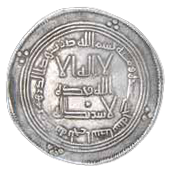
Stagnation and invasions (10th to 16th centuries)

By the 10th century, the city's population was between 300,000 and 500,000. Baghdad's early meteoric growth slowed due to troubles within the Caliphate, including relocations of the capital to Samarra (during 808–819 and 836–892), the loss of the western and easternmost provinces, and periods of political domination by the Iranian Buwayhids (945–1055) and Seljuk Turks (1055–1135).


Nevertheless, the city remained one of the cultural and commercial hubs of the Islamic world until February 10, 1258, when it was sacked by the Mongols under Hulagu Khan during the sack of Baghdad. The Mongols massacred most of the city's inhabitants, including the Abbasid Caliph Al-Musta'sim, and destroyed large sections of the city. The canals and dykes forming the city's irrigation system were also destroyed. The sack of Baghdad put an end to the Abbasid Caliphate, a blow from which the Islamic civilization never fully recovered.
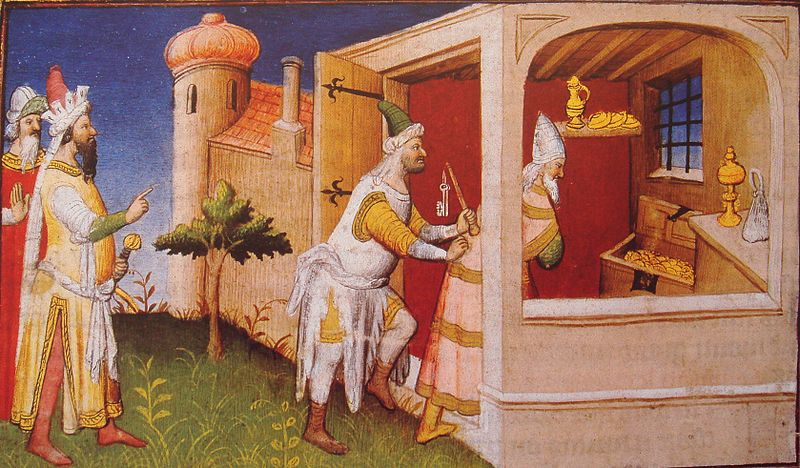
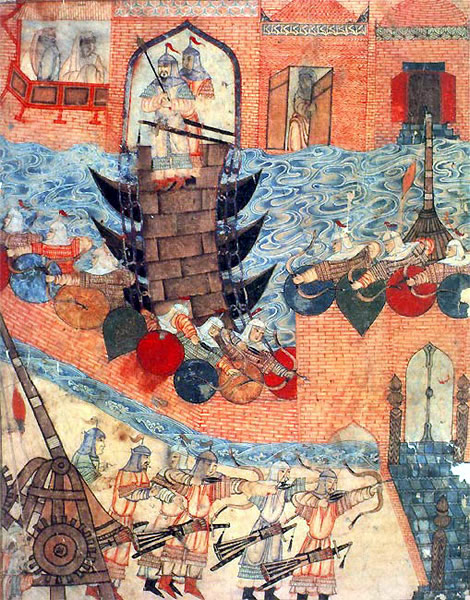
At this point Baghdad was ruled by the Il-Khanids, part of the Mongolian Empire in Iran. The city was reconstructed and flourished under the Mongols. In 1401, Baghdad was again sacked, by Timur ("Tamerlane").

It became a provincial capital controlled by the Jalayirid (1400–1411), Qara Quyunlu (1411–1469), Aq Quyunlu (1469–1508), and Safavid (1508–1534) dynasties.

Ottoman Baghdad (16th to 19th centuries)
In 1534, Baghdad was conquered by the Ottoman Turks. Under the Ottomans, Baghdad fell into a period of decline, partially as a result of the enmity between its rulers and Persia. For a time, Baghdad had been the largest city in the Middle East before being overtaken by Constantinople in the 16th century. The city saw relative revival in the latter part of the 18th century under the Mamluk dynasty. The Nuttall Encyclopedia reports the 1907 population of Baghdad as 185,000.

20th century
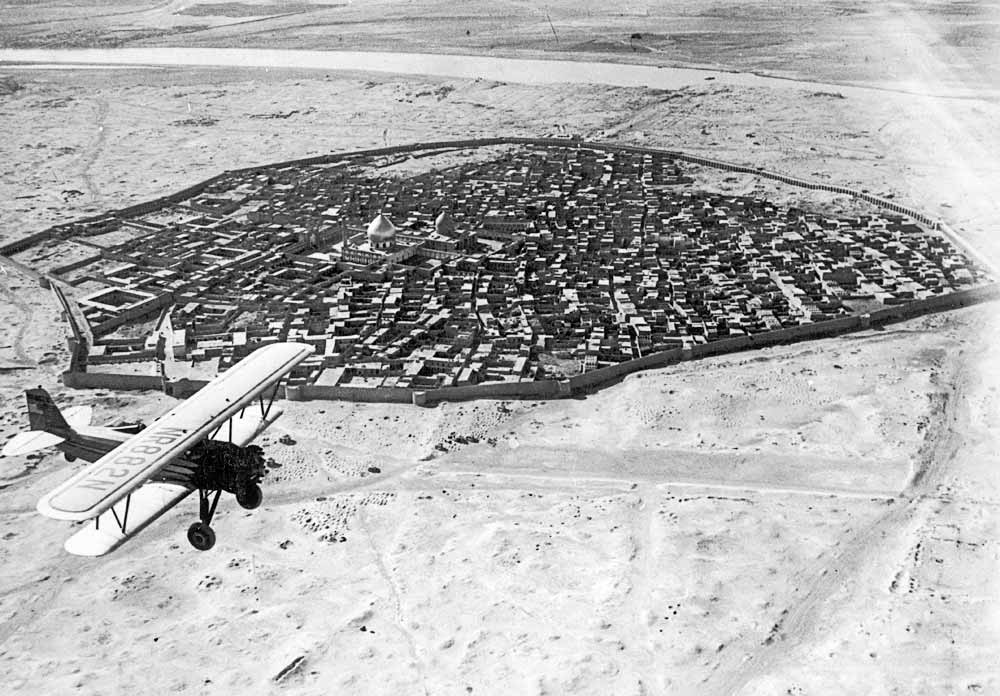
Baghdad remained under Ottoman rule until the establishment of the kingdom of Iraq under British control in 1921. British control was established by a systematic suppression of Iraqi Arab and Kurdish
national aspirations.


Iraq was given formal independence in 1932, and
increased autonomy in 1946. In 1958 the Iraqi Army deposed the grandson
of the British-installed monarch, Faisal II. The city's population grew from an estimated 145,000 in 1900 to 580,000 in 1950 of which 140,000 were Jewish.



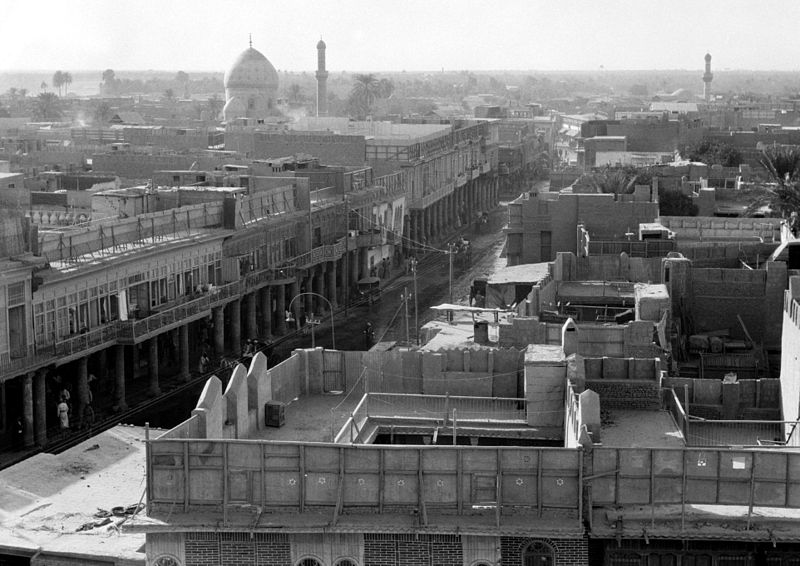
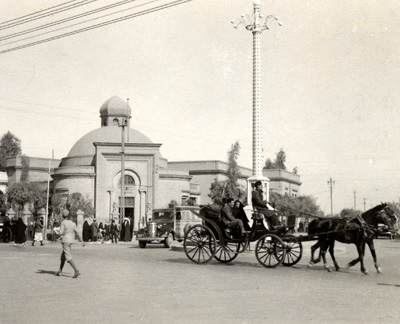

During the 1970s Baghdad experienced a period of prosperity and growth because of a sharp increase in the price of petroleum, Iraq's main export. New infrastructure including modern sewage, water, and highway facilities were built during this period. However, the Iran–Iraq War
of the 1980s was a difficult time for the city, as money flowed into
the army and thousands of residents were killed. Iran launched a number
of missile attacks against Baghdad, although they caused relatively little damage and few casualties. In 1991 the Persian Gulf War caused damage to Baghdad's transportation, power, and sanitary infrastructure.



Baghdad was bombed very heavily in March and April 2003 in the 2003 invasion of Iraq, and fell under US control by April 7-April 9. Additional damage was caused by the severe looting[20] during the days following the end of the war. With the deposition of Saddam Hussein's regime, the city was occupied by U.S. troops. The Coalition Provisional Authority established a three-square-mile (8 km²) "Green Zone"
within the heart of the city from which it governed Iraq during the
period before the new Iraqi government was established. The Coalition Provisional Authority ceded power to the interim government at the end of June 2004 and dissolved itself.[citation needed]



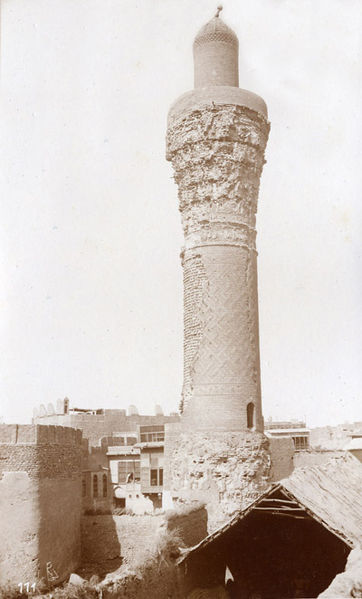
On September 23, 2003, a Gallup poll indicated that about two-thirds of Baghdad residents said that the removal of the Iraqi leader was worth the hardships they encountered, and that they expected a better life in five years' time. As time passed, however, support for the occupation declined dramatically. In April 2004, USA Today reported that a follow-up Gallup poll in Baghdad indicated that "only 13 percent of the people now say the invasion of Iraq was morally justifiable. In the 2003 poll, more than twice that number saw it as the right thing to do."[21]
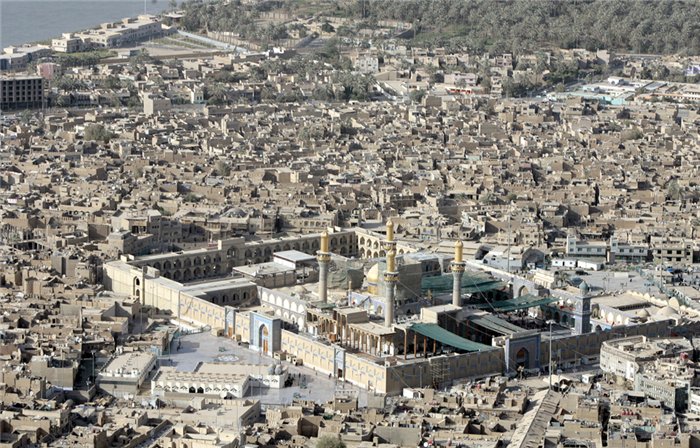
Most residents of Baghdad became impatient with the occupation because essential services such as electricity were still unreliable more than a year after the invasion. In the hot summer of 2004, electricity was only available intermittently in most areas of the city. An additional pressing concern was the lack of security. The curfew imposed immediately after the invasion had been lifted in the winter of 2003, but the city that had once had a vibrant night life was still considered too dangerous after dark for many citizens. Those dangers included kidnapping and the risk of being caught in fighting between security forces and insurgents.[citation needed]


On 10 April 2007, the United States military began construction of a three mile (5 km) long 3.5 metre tall wall around the Sunni district of Baghdad.[22] On 23 April, the Iraqi Prime Minister, Nouri Maliki, called for construction to be halted on the wall.[23][24]
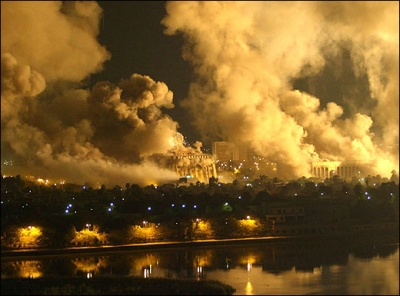


The on-going sectarian violence had, by the beginning of summer 2007, cantoned the city of Baghdad into distinct and hostile zones: a larger Shia city (nearly all of the city east of the Tigris, with the exception of Adhamiya and the Rashid districts), and a smaller Sunni city, west of the Tigris (with the exception of Kadhimiya and southwestern districts).[25]





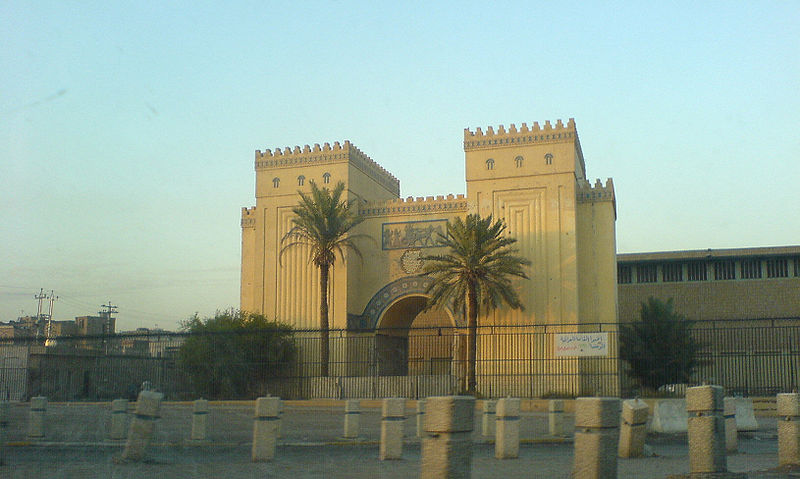

References
§ Hattstein, Markus; Peter Delius (2000). Islam Art and Architecture.
p. 96. ISBN 3-8290-2558-0.
§ Encyclopædia Iranica,
Columbia University,
p.413.
8. ^ Le Strange,
G (Oct. 1899). "Baghdad during the Abbasid Caliphate. A Topographical
Summary, with a Notice of the Contemporary Arabic and Persian Authorities".
Journal of the Royal Asiatic Society of Great Britain and Ireland:
847–893. Retrieved 10 April 2012..
10. ^ The
History of Al-Tabari, Volume XXVIII. New York: New York State University.
Edited by Jane Dammen McAuliffe. 1995. p. 243.
12. ^ Bevan,
Brock Llewllyn (2000). "Greek Though, Arabic Culture: The Graeco-Arabic
Translation Movement in Baghdad and Early Abbasid Society (2nd-4th/8th-10th
Centuries)". Muslim World (90.1-2): 249.
13. ^ Bevan,
Brock Llewllyn (2000). "Greek Though, Arabic Culture: The Graeco-Arabic
Translation Movement in Baghdad and Early Abbasid Society (2nd-4th/8th-10th
Centuries)". Muslim World (90.1-2): 250.
19. ^ Kennedy,
Hugh (1981). "Central Government and Provincial Elites in the Early
Abbasid Caliphate". Bulletin of the School of Oriental and African
Studies, University of London (44.1): 26.
20. ^ JOHNSON,
I.M. The impact on libraries and archives in Iraq of war and looting in 2003 -
a preliminary assessment of the damage and subsequent reconstruction efforts.
International Information and Library Review, 37 (3), 2005, 209-271.
21. ^ Soriano,
Cesar G.; Komarow, Steven (2004-04-30). "Poll: Iraqis out of patience". USA
Today. Retrieved 2010-05-04.
22. ^ MacAskill,
Ewen (2007-04-21). "Latest US solution to Iraq's civil war: a three-mile
wall". London: guardian.co.uk. Retrieved 2009-08-21.
23. ^ "Iraqi PM calls for halt to Baghdad wall".
London: guardian.co.uk.
2007-04-23. Retrieved 2009-08-21.

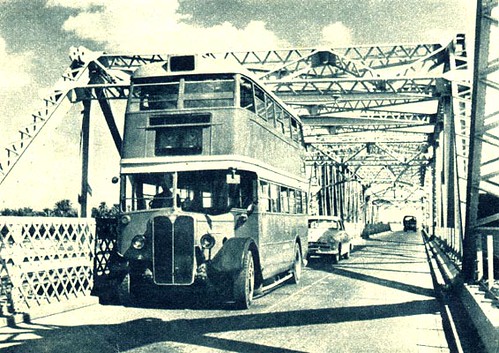
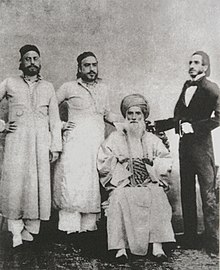










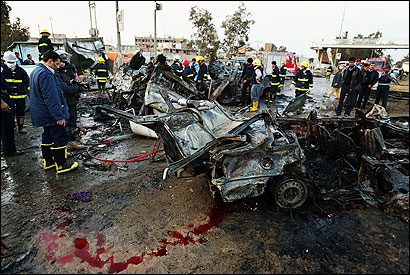




Taken from: http://en.wikipedia.org/wiki/History_of_Baghdad [30.07.2013]




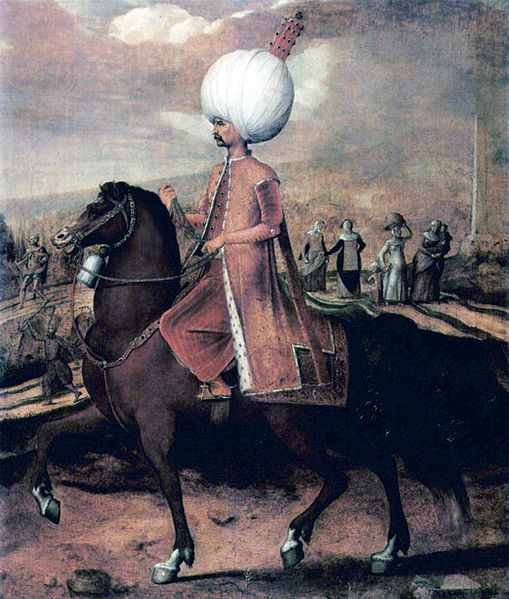
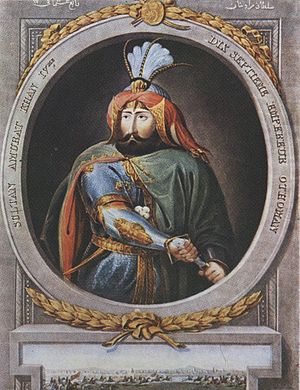

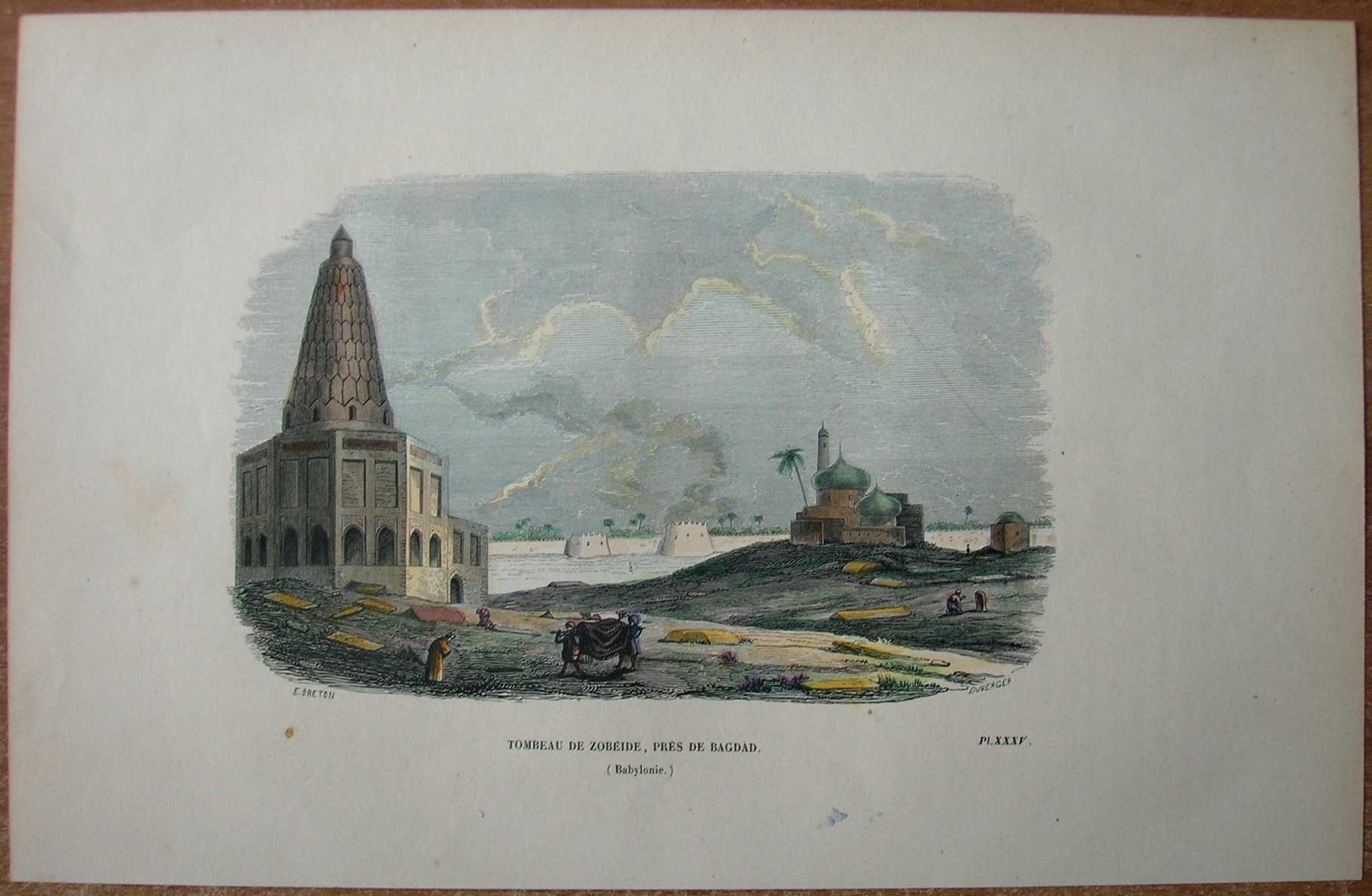

No comments:
Post a Comment